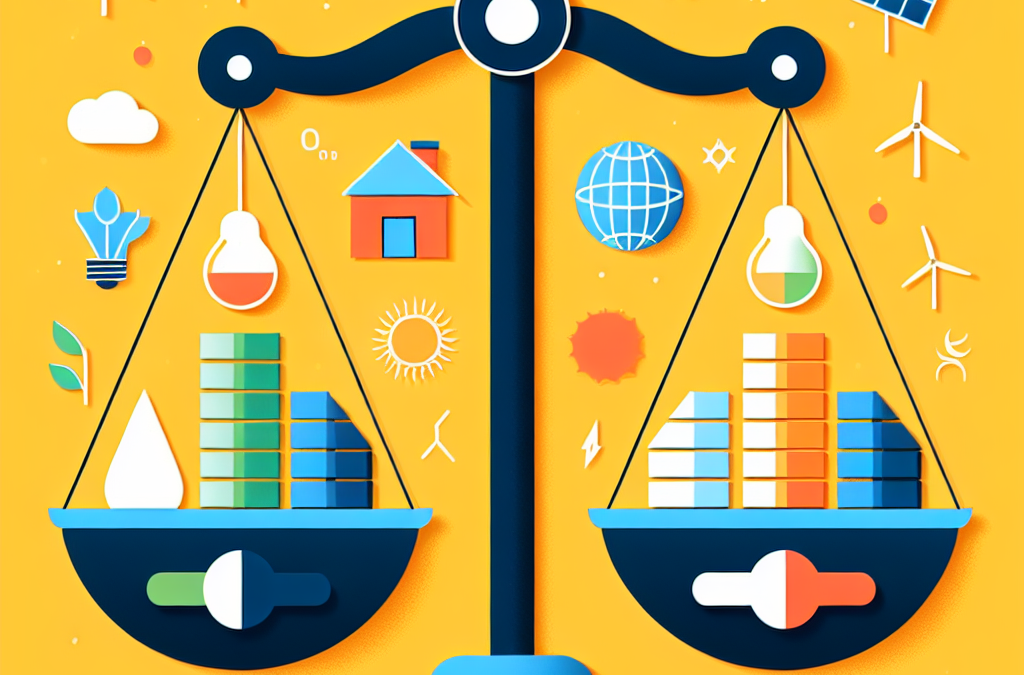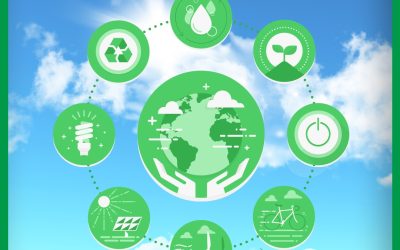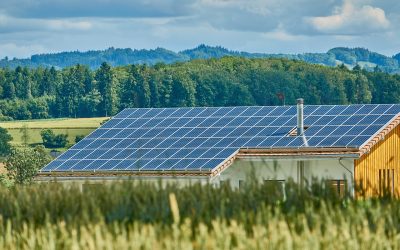Imagine a world where energy transmission is efficient, with minimal energy waste. No more resources exhausted on unnecessary energy loss, no more increased costs and environmental impact. This captivating article explores the innovative solutions that are revolutionizing the way we transmit and distribute energy, promising a future where every electron counts. Get ready to witness the game-changing technologies and strategies that will pave the way for a more sustainable and energy-efficient world.
Introduction
When it comes to energy transmission, efficiency is key. With the increasing demand for energy, the environmental impact of traditional energy sources, and the economic considerations involved, it is crucial to minimize energy waste in energy transmission. In this article, we will explore the importance of energy transmission efficiency, the challenges that come with it, and the various strategies and technologies that can be implemented to improve efficiency.
Importance of Energy Transmission Efficiency
Increasing Energy Demand
As our modern world continues to rely heavily on energy for various activities, the demand for electricity is steadily increasing. From powering homes and businesses to fueling transportation and industry, our energy needs are soaring. However, the existing energy infrastructure is often unable to keep up with this demand, leading to inefficiencies and wastage. By improving energy transmission efficiency, we can make better use of the energy we generate and reduce the strain on the overall system.
Environmental Impact
Another critical reason to prioritize energy transmission efficiency is its environmental impact. Traditional energy sources like fossil fuels contribute to climate change and pose numerous environmental risks. By reducing energy waste in transmission, we can minimize the need for additional power generation, particularly from these polluting sources. This, in turn, helps to reduce greenhouse gas emissions and mitigate the negative effects on our planet.
Economic Considerations
Efficiency in energy transmission also has significant economic implications. Wasted energy means wasted resources and increased costs. When energy is lost during transmission, it requires more generation capacity to meet the demand, driving up expenses for both producers and consumers. By improving energy transmission efficiency, we can reduce the need for additional infrastructure investments and maintain a more cost-effective energy system.
Challenges in Energy Transmission
Resistance and Heat Loss
One of the primary challenges in energy transmission is the resistance encountered when electricity flows through transmission lines. This resistance generates heat, resulting in energy loss during transmission. The higher the resistance, the greater the heat loss and inefficiency. Minimizing resistance through careful selection of conductive materials and optimizing the design of transmission lines can help minimize energy waste.
Voltage Drop
Voltage drop occurs when there is a loss of voltage as electricity travels through transmission lines. This drop leads to a decrease in power quality and can result in the inefficient use of energy. To combat voltage drop, it is essential to maintain voltage levels within acceptable limits and implement technologies such as compensators and voltage regulators along the transmission grid.
Electromagnetic Interference
Electromagnetic interference (EMI) can also hinder energy transmission efficiency. EMI can be generated by various sources, including nearby power lines, electrical equipment, and radio frequency interference. This interference can disrupt the flow of electricity and cause additional energy losses. Implementing effective shielding and grounding techniques can help minimize the impact of EMI and enhance energy transmission efficiency.
Improving Energy Transmission Efficiency through Infrastructure
Upgrading Transmission Lines
One way to enhance energy transmission efficiency is by upgrading existing transmission lines. Old and outdated infrastructure may not be able to handle the increasing demand and may lead to significant energy losses. By investing in upgrading transmission lines with modern materials and technologies, we can reduce resistance, decrease heat loss, and improve overall efficiency.
Advancements in High-Voltage Direct Current (HVDC)
High-Voltage Direct Current (HVDC) is a technology that allows for efficient long-distance transmission of electricity. Unlike traditional alternating current (AC) systems, HVDC offers lower energy losses during transmission. By using HVDC transmission lines for long-distance power transmission, we can significantly reduce energy waste and improve overall efficiency.
Grid Optimization and Smart Technologies
Grid optimization and the implementation of smart technologies are essential for improving energy transmission efficiency. By integrating advanced monitoring, control, and automation systems, we can optimize grid operations, detect and correct inefficiencies, and minimize energy losses. Smart technologies enable real-time data analysis, predictive maintenance, and rapid response to disruptions, ensuring the maximum utilization of energy resources.
Reducing Energy Loss in Transformers
Efficiency Ratings and Standards
Transformers play a crucial role in energy transmission and distribution. To minimize energy waste, it is essential to use transformers with high-efficiency ratings. Efficiency standards set by regulatory bodies help ensure that transformers meet certain performance criteria and operate at maximum efficiency. By adhering to these standards and promoting the use of efficient transformers, we can reduce energy losses in the transformation process.
Enhanced Cooling Systems
Efficient cooling systems are vital for reducing energy losses in transformers. Cooling systems help maintain optimal operating temperatures and prevent overheating, which can lead to energy waste. Innovations in cooling technology, such as liquid cooling and active cooling, can significantly improve transformer efficiency and minimize energy losses associated with heat dissipation.
Zero-Carbon Transformer Design
In recent years, there has been a growing focus on developing zero-carbon transformer designs. These transformers aim to minimize environmental impact and energy losses. Zero-carbon transformer designs prioritize the use of eco-friendly materials, such as biodegradable oils and recyclable components, to achieve higher energy efficiency while also reducing carbon emissions throughout their lifecycle.
Efficient Energy Conversion Techniques
Power Electronics
Power electronics play a crucial role in energy conversion and transmission. These devices convert electrical energy from one form to another, ensuring compatibility between the energy source and the load. By employing advanced power electronics systems, such as inverters and converters, we can achieve efficient energy conversion, minimize losses, and optimize the overall energy transmission process.
Superconducting Materials
Superconducting materials hold great promise for improving energy transmission efficiency. These materials have zero electrical resistance when cooled to extremely low temperatures, enabling near-lossless transmission of electricity. Superconducting cables and other components can significantly reduce energy losses and increase the capacity of transmission systems. However, challenges related to cost, scalability, and maintaining low-temperature conditions still need to be addressed to fully harness the potential of superconducting technologies.
Energy Storage Systems
Energy storage systems play a vital role in energy transmission efficiency by providing flexibility and balancing supply and demand. By storing excess energy during periods of low demand and releasing it during peak demand, energy storage systems can help optimize the overall energy transmission process and minimize energy waste. Advancements in battery technologies, such as lithium-ion batteries, are driving the adoption of energy storage systems on a larger scale.
Importance of Maintenance and Monitoring
Regular Inspections
Regular inspections of energy transmission infrastructure are crucial for identifying and addressing potential issues that could lead to energy waste. Inspecting transmission lines, transformers, and other equipment helps identify any signs of wear and tear, corrosion, or damage that may affect energy efficiency. Timely maintenance and repair can prevent further deterioration and ensure optimal energy transmission.
Diagnostics and Predictive Analytics
Diagnostics and predictive analytics offer valuable insights into the performance of energy transmission systems. By analyzing real-time data, monitoring equipment conditions, and identifying anomalies, potential failures or inefficiencies can be detected in advance. This allows for proactive maintenance, reducing downtime, improving energy efficiency, and minimizing energy losses.
Asset Management Systems
Implementing asset management systems helps optimize the maintenance and operation of energy transmission assets. These systems enable efficient tracking of equipment performance, maintenance schedules, and compliance with regulations. By effectively managing assets and prioritizing maintenance activities, energy transmission can be optimized, reducing energy waste and maximizing system efficiency.
Role of Policy and Regulations
Incentives for Energy Transmission Efficiency
Policy and regulations play a crucial role in promoting energy transmission efficiency. Governments can incentivize the use of efficient technologies, such as HVDC transmission, through financial incentives, tax breaks, or grants. Additionally, policies can encourage research and development in energy transmission technologies to foster innovation and drive efficiency improvements.
Standards and Compliance
Setting and enforcing standards for energy transmission equipment and systems are essential for ensuring efficiency and minimizing energy waste. Regulatory bodies can establish and enforce performance standards for transformers, transmission lines, and other components. Compliance with these standards ensures that the energy transmission infrastructure operates at maximum efficiency and minimizes losses.
Integration of Renewable Energy Sources
Another important aspect of policy and regulations is the integration of renewable energy sources into the energy transmission system. By incentivizing the use and integration of renewable energy technologies, governments can promote a more sustainable and efficient energy system. Renewable energy sources, such as solar and wind, have the potential to reduce the reliance on traditional fossil fuel-based generation, further improving energy transmission efficiency.
Collaborative Efforts for Energy Waste Reduction
Industry Partnerships
Collaboration within the energy industry is essential for driving innovation and finding solutions to energy waste. Industry partnerships can facilitate knowledge sharing, joint research, and the development of new technologies. By working together, energy companies, equipment manufacturers, and research institutions can accelerate the adoption of energy-efficient practices and technologies.
Research and Development Initiatives
Investment in research and development initiatives is crucial for advancing energy transmission efficiency. Governments, private organizations, and academic institutions should fund research programs that focus on developing novel technologies, materials, and techniques. Through research and development, we can uncover breakthrough solutions to energy waste, paving the way for a more sustainable and efficient energy transmission system.
Knowledge Sharing and Training
Sharing knowledge and providing training opportunities are key to driving energy waste reduction. Industry conferences, seminars, and workshops allow experts to exchange ideas, share best practices, and discuss new approaches to improving energy transmission efficiency. Training programs can also equip professionals with the necessary skills and knowledge to implement energy-efficient practices in their respective areas of work.
Emerging Technologies and Future Trends
Wireless Power Transmission
Wireless power transmission is an emerging technology that has the potential to revolutionize energy transmission processes. By using magnetic fields or electromagnetic radiation, wireless power transmission can eliminate the need for physical conductors, minimizing energy losses associated with resistance and heat dissipation. Although still in early stages of development, wireless power transmission holds promise for more efficient and flexible energy transmission systems.
Microgrids and Decentralized Energy Systems
Microgrids and decentralized energy systems offer a more localized approach to energy transmission. By distributing energy generation and storage closer to the point of consumption, microgrids can reduce transmission distances, thereby minimizing energy losses. Additionally, these systems allow for greater integration of renewable energy sources and provide more reliable and resilient energy supply, particularly in remote or off-grid locations.
Energy Internet
Energy Internet, also known as the Internet of Energy, is a concept that envisions a highly interconnected and intelligent energy transmission network. It involves the integration of advanced technologies, such as artificial intelligence, data analytics, and automation, to optimize energy flow, monitor energy usage, and enable real-time decision-making. Energy Internet has the potential to improve energy transmission efficiency by enabling smarter grid management and enhancing overall system performance.
In conclusion, minimizing energy waste in energy transmission is of utmost importance in today’s world. With increasing energy demands, environmental concerns, and economic considerations, improving energy transmission efficiency is essential. By addressing challenges such as resistance and heat loss, voltage drop, and electromagnetic interference, and implementing strategies like upgrading infrastructure, enhancing transformer design, and adopting efficient energy conversion techniques, we can significantly reduce energy waste in transmission. Additionally, by emphasizing the importance of maintenance and monitoring, implementing effective policies and regulations, fostering collaborative efforts, and staying abreast of emerging technologies, we can continue to drive efficiency improvements and pave the way for a more sustainable and efficient energy transmission system.










